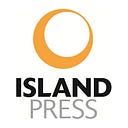How Did You Find Us? 60 Years After Publication of “The Other America,” Conditions Have Only Deteriorated in Rural Black Communities.
By Jacqui Patterson
“How did you find us?” It’s a question one associates with people found stranded on a deserted island. Or people who have been located under the rubble of an earthquake or a mine collapse. Or perhaps when a group has gotten lost while mountain climbing and is finally rescued.
However, these are not the far-flung circumstances in which this confounded query was posed. This was the question organizers heard time and time again from taxpaying residents of rural Black communities in the United States of America.
After mapping communities by income, race, incorporation status, and exposure to climate and environmental hazards, organizers from The Chisholm Legacy Project hit the road in 20+ states across the South, Northeast, and Midwest. We visited more than 200 communities with area median income below the poverty line; places that on paper appeared to be politically, economically, and socially disenfranchised.*
What we found was often more devastating than we expected.
One community, whose residents descended from people whose enslaved labor built the infrastructure of this nation, had a median household income of $7,416 . We encountered communities that have not had running water for decades. Too many lacked access to nutritious food, safe and sustainable housing, and reliable and affordable energy. Other communities were poisoned every day by the industries operating with impunity in their backyards. Several were reticent about seeking help because of fears related to the immigration status of their residents.
Michael Harrington wrote The Other America in 1962, exposing deep pockets of poverty in this land of plenty. Sixty years later, those pockets remain, and in some cases, conditions have actually worsened in the era of climate change. Many of the towns we visited were intentionally sited in floodplains and other vulnerable areas where they are repeatedly inundated with flooding. One community had their relatives’ caskets unearthed by extreme flooding during a disaster two years ago; the remains are still piled up in FEMA trailers, a macabre and horrifying injustice to say the least.
Last week, I met a gentleman named Jacobo Marcus, co-founder of the Hopi Tutskwa Permaculture Institute in Arizona. I listened to him talk about his greywater system, passive solar, bountiful farm, and other ways that he and his family model living in harmony with the Earth, which in return shares her abundance. I contemplated the question of what it would take to spread the word and skills of this liberated way of living to the communities we’ve been visiting.
Learning about Jacobo’s life and work reminded me of all that we’ve lost, all that was driven out of us with forced socialization into American society, which has lost its connection with the land. But here we are. The question is, how do we re-weave those critical relationships?
And, how do we get essential resources and services to neglected communities? The federal government’s Justice40 initiative allocates at least 40% of upwards of a trillion dollars in federal resources for disadvantaged communities. Yet there are no mechanisms to ensure that the places we visited — which have remained untouched by federal resources over decades — receive priority funding. Moreover, the complex process of applying for federal funds virtually guarantees that the communities who need these resources the most will get nothing.
Social justice philanthropy spends billions of dollars every year to improve the wellbeing of communities, people, and the planet. While these resources have done a lot of good in a lot of places, they have largely failed to reach the communities in deepest need.
Philanthropy can do better. Foundations can dedicate funding for deeply rural communities in grinding poverty. They can support organizations such as the Historic Black Towns and Settlements Alliance that engage in outreach with these communities to help them access funding.
And both philanthropy and federal agencies can fund communities that lack organizational infrastructure through fiscal sponsors like the Movement Strategy Center (MSC), enabling those communities to pursue their own goals. For example, MSC served as a fiscal sponsor for the town of Sandbranch, Texas — a rural community with a median household income of $11K and no running water — which enabled community leadership to secure solar energy to provide clean water to its residents.
“How did you find us?” was the question we were asked, over and over, in the rural Black communities we visited. Now, it is time for public and private funders to see those communities and ensure that they have the resources to achieve self-determination and live up to the American ideals of “liberty and justice for all”. Federal agencies, philanthropy, faith institutions, the nonprofit sector, and we as humanity must step up to the responsibility.
A core principle of Ubuntu says, “I am because you are.” And Dr. Martin Luther King once said, “No one is free until we are all free.” We can’t have a true democracy as long as the “other America” remains invisible, as long as the basics of civilized society remain out of reach for many of our people. We will only achieve “liberty and justice for all” when we close the gap and bridge the final mile to ensure that these long-neglected communities can share in our nation’s abundance.
*We are intentionally not naming the communities we visited, as we want the communities to tell their own stories and for us to share only with explicit permission gained as we grow and deepen our relationships.
—
Jacqui Patterson is the Founder and Executive Director of The Chisholm Legacy Project: A Resource Hub for Black Frontline Climate Justice Leadership.
